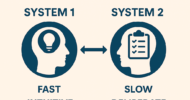Being a physician is hard. Really hard. Four years of medical school, multiple years of residency and perhaps fellowship training add up to years of working endless days in a row and powering through exhausting nights. For many of us, this need to be able to power through continues even when we finally make it as an attending.
But being a patient is harder. Being the daughter or son or husband of a patient is infinitely harder. As our loved ones approach the end of life, our job as a family member is the most grueling, physically challenging and emotionally draining job that even residency never prepares us for.
We are never really prepared for death. Death happens. It happens to our loved ones. It happens to our patients, too. As physicians, we like to believe that we all gave it the good fight. We say we tried all that we could. We tell the family that it was for the better. And then we straighten our white coats as we walk into the next room with a fabricated smile on our face pretending that a piece of us did not get left behind in the last room.
We have trained, sometimes for a whole decade, on how to fix the body and how to cheat death for as long as possible. When our patient dies, we are sometimes left feeling that we failed them in some way. But maybe it is not death that is the failure. Perhaps the failure is the lack of acceptance and preparation for death, not just for us, but also for the patient and their family.
My mother was recently admitted to an ICU with respiratory distress and multiple co-morbidities. She has been DNR/DNI for quite some time, and my family knows that life will not continue endlessly. As our family kept a 24-hour vigil in the ICU, her respiratory rate remained over 40, her retractions became more painful to watch and her grunts were hard to ignore. A physician walked in the room, with his hands in the pockets of his long white coat, and stood at the foot of the bed. He asked the nurse what her vitals had been, demonstrating he had not looked at her chart yet. He glanced in the direction of my mother, covered to her chin in blankets, while a telemetry monitor above her clearly demonstrated her vital signs. Then he said, “OK, got it.” And he walked out of the room. He did not introduce himself. He did not acknowledge his patient’s daughter, sitting so close to the bed she was almost in it. He did not say good morning to my mother or even touch her. He was gone before I could even ask a question. This was repeated the next day and the next. I became determined to make sure he was not going to submit a bill for the care he was not providing.
Then one night, she coughed up a lot of mucus and her respiratory rate dropped to 22. The retractions stopped, and she quickly weaned off of oxygen. In a matter of hours we went from thinking “this is it” to being transferred to a regular floor and preparing to go home.
A new hospitalist on the medicine floor knocked on the door and came in with a smile on his face as he held out his hand to shake our hands. He introduced himself to each of us and then went to my mother and introduced himself to her. He asked her how she felt while touching her gently on the shoulder. He carefully listed to her lungs and finished his exam. He discussed each of her medical problems and then outlined the requirements for going home. He told us when he would be back and let us know we could have the nurses reach him at any time. And he repeated this bedside manner each day until my mother was wheeled to the front entrance of the hospital and put in our car to go home.
As I made plans for follow up for my mother, I knew I wanted to somehow give this second hospitalist kudos with his employer for his care while simultaneously giving constructive feedback for the behavior of the physician from the first few days. But these two cannot really be compared. The second physician had a much easier, more satisfying job. He had only good news to deliver and carry out a plan for going home. He got to be the hero doctor that fixed my mom.
The first physician had a job that I would never envy. His patient was potentially dying. His care would not fix it. Our family wanted to know what we could do, but he did not have an answer. He could tell the patient that she was dying and there was nothing more to be done. He could tell the family all is futile. Who of us physicians really wants to have that conversation? Who wants to be that guy who has to then walk into the next room with a smile pretending nothing is wrong? An explanation would not change the outcome, so why bother to acknowledge that his care will fail to prevent the one thing he has trained so hard to avoid death.
In all of my training as physician, even on my gynecologic oncology rotations in residency, we rarely talked about death and dying. We talked about saving. We talked about the surgeries, the medicines, and the care we would give to cheat death in its tracks. We talked about which patients had a plan and which patients would be labeled “not salvageable.” We were told to make some patients DNR/DNI. We filled out the hospice orders for those that could not be salvaged and let case management take over placement issues. Then, we would move to the next room and talk about what we could do to save.
A few floors above us was labor and delivery — the happy place. After ordering hospice on oncology, I always had a need to deliver a baby. The sound of a baby crying and a new mama giving her sweet child a kiss as he cuddled close to her chest was often celebrated by tears of joy. Almost fifteen years later, this is still my happy place, except when it is not.
How do you tell a mother or a father that they will not hear their baby cry? How do you explain that they will hold their daughter’s lifeless body soon, or even worse, they will witness hours of agonal breathing and see their daughter’s heart slowly stop beating through her thin chest wall. We could explain to the mom that her breasts may leak milk in the coming weeks so that she has a constant reminder of the baby she can no longer hold. We can explain that it is “pre-viable” and that “nothing can be done” for it. We can talk about finding out why this happened to it “to help with next time.” There is nothing left for us to fix, so we give her tissues to wipe away her tears of grief, and we move on. We walk next door and push the celebration balloons aside on our way to handing over another beautiful son to nuzzle against his mother’s chest.
As physicians, we are called to do more than fix bodies. We are charged with taking care of people, not just bodies. Our patients and their families need us most when there is nothing left to fix but a breaking heart and all-consuming sadness. They need our presence sitting at the bedside, even when there is no plan to explain. They need our touch on the shoulder while we spend a few moments keeping vigil with their loved ones. They need us to acknowledge that even when you know you gave it the good fight, it still aches viscerally. They need someone to show them that it is okay to laugh in between tears as they remember life’s good times, even as we witness the agonal final breaths. They need their physician, who they trusted to fix them, to be the one who helps them see that death is not the failure of defeat.
We need it too. We need the reassuring hug from the family acknowledging that we did not fail at our job that we trained so hard to do. We need the expression of gratitude for helping them, even when we could not fix it. We need to know there were good memories to hold on to. We need to be comforted by the family as we see a piece of our heart leave us in that room. We need to hold on to those thoughts as sleep eludes us in the night. We need to have closure too.
So whether you are an intensivist or oncologist who may witness death with more frequency or an obstetrician or pediatrician who does not, what will you do when your patient is nearing the end of life? How will you respond when your patient needs you the most? Will you escape quickly to the next room when you have nothing you can fix? Or will you stay and keep vigil with the family for a few moments? They still need your kindness, compassion, caring, and knowledge to make it through this last challenge in life. You need them too.
Rakhi Dimino is an obstetrician-gynecologist.
Image credit: Shutterstock.com





























![Antimicrobial resistance: a public health crisis that needs your voice [PODCAST]](https://kevinmd.com/wp-content/uploads/Design-1-190x100.jpg)

![Rethinking medical education for a technology-driven era in health care [PODCAST]](https://kevinmd.com/wp-content/uploads/The-Podcast-by-KevinMD-WideScreen-3000-px-4-190x100.jpg)
